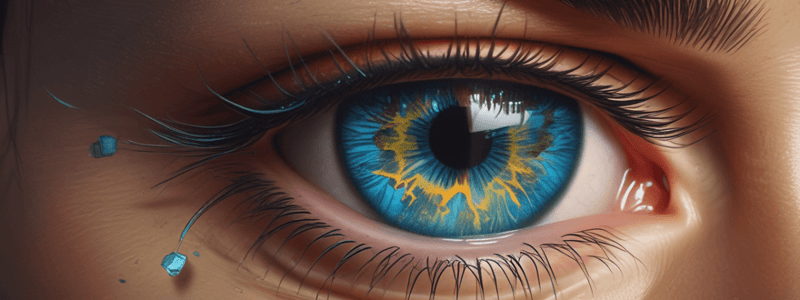Podcast
Questions and Answers
What is the primary purpose of a detector as explained in the text?
What is the primary purpose of a detector as explained in the text?
- To study celestial objects that are too bright for the human eye to see
- To measure light after it has been brought into focus (correct)
- To capture images quickly like a camera
- To replace the human eye in detecting mushrooms
Why do astronomers use long exposure times when photographing celestial objects with a telescope?
Why do astronomers use long exposure times when photographing celestial objects with a telescope?
- To capture images more quickly than with short exposures
- To observe objects that are too bright for telescopes
- To allow for better images of faint celestial objects (correct)
- To match the exposure times of regular cameras
How are photography and telescopes related based on the text?
How are photography and telescopes related based on the text?
- Photography cannot be done using telescopes
- Photographic plates or film cannot be placed in the focal plane of a telescope
- Telescopes can only be used for photography purposes
- Telescopes can act like cameras by using photographic plates or film (correct)
What distinguishes detectors from the human eye as explained in the text?
What distinguishes detectors from the human eye as explained in the text?
Why is it mentioned that astronomers sometimes use very short exposures?
Why is it mentioned that astronomers sometimes use very short exposures?
In what way can a telescope be used similarly to a camera according to the text?
In what way can a telescope be used similarly to a camera according to the text?
What is the main difference between human eyes and detectors discussed in the text?
What is the main difference between human eyes and detectors discussed in the text?
What is the main advantage of using a CCD over photography for recording images of celestial objects?
What is the main advantage of using a CCD over photography for recording images of celestial objects?
What is the purpose of the slit in a spectrograph?
What is the purpose of the slit in a spectrograph?
What is the main purpose of spectroscopy in astronomy?
What is the main purpose of spectroscopy in astronomy?
How are spectral lines in spectroscopy related to chemical elements and molecules?
How are spectral lines in spectroscopy related to chemical elements and molecules?
What is the main difference between photometry and spectroscopy in astronomy?
What is the main difference between photometry and spectroscopy in astronomy?
What is the main purpose of a spectrograph in astronomical spectroscopy?
What is the main purpose of a spectrograph in astronomical spectroscopy?
How does the slit in a spectrograph help to improve the quality of the spectral measurements?
How does the slit in a spectrograph help to improve the quality of the spectral measurements?
What is the primary advantage of using a CCD over photographic film for astronomical imaging?
What is the primary advantage of using a CCD over photographic film for astronomical imaging?




